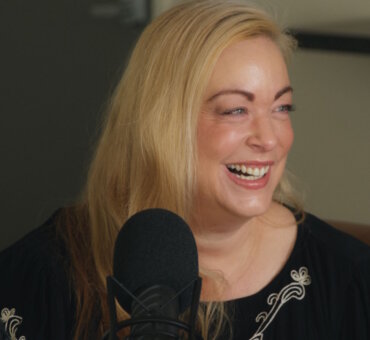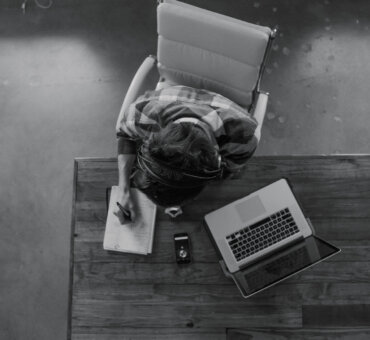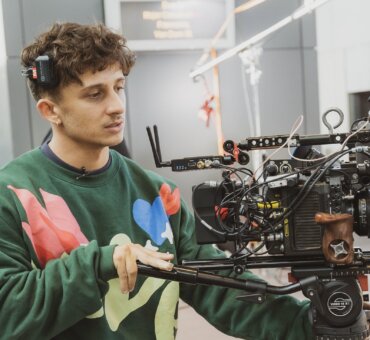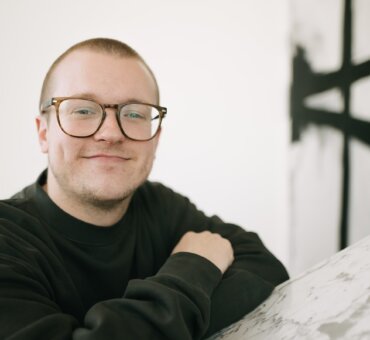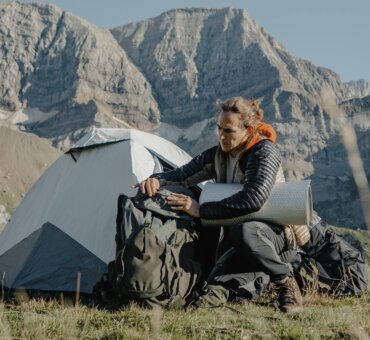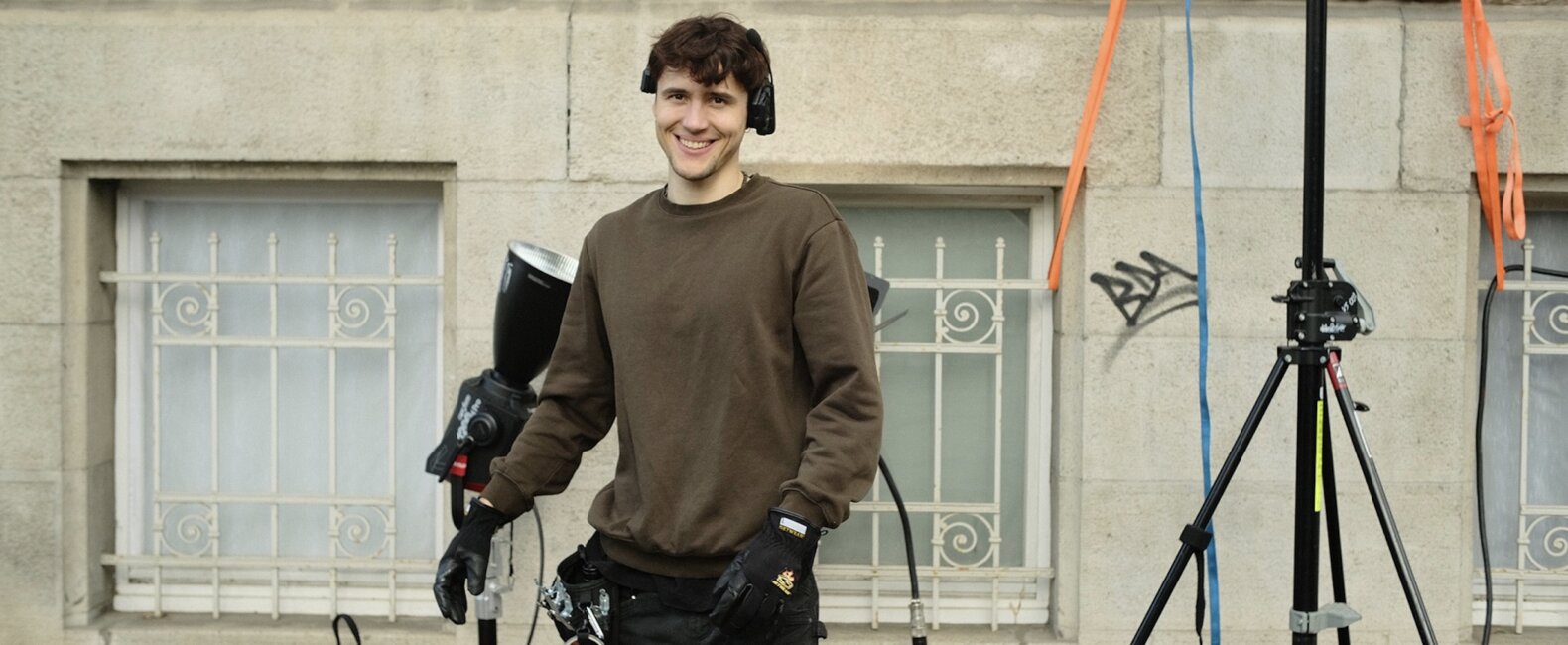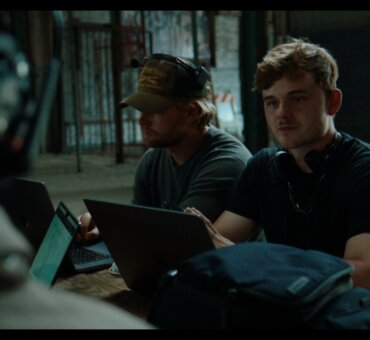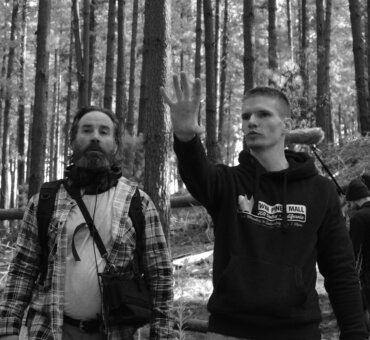Filmmaker, gaffer, and colorist Jared Paul transports his audience to every scene through the use of light and color. Read his interview below to learn more about what sparked his interest in filmmaking, the importance of music in his films, and why he turns to Musicbed for the right music to elevate his work.
Musicbed: What sparked your passion for filmmaking/storytelling?
Jared Paul: As a kid, I had some exposure to the world of filmmaking. I distinctly remember being fascinated by a crane/camera operator named Raffael at a live event when I was around 8 years old. Seeing him in action sparked something in me, and I wanted to follow in his footsteps. At that age, it’s natural to be drawn to various cool professions. When I stumbled upon films and videos about filmmaking gear on platforms like YouTube and the Internet my interest took off. As I delved deeper, I realized I wanted to specialize more, focusing on perfecting every detail and meticulously planning each shot. This desire stemmed from comparing my work to more professional pieces, a habit I still follow to improve my skills.
Ultimately, my journey has led me to value the importance of attention to detail and the art of planning each shot in filmmaking and creating with meaning. That way, it went hand in hand with also wanting to craft stories that leave a deep impression by combining compelling narratives with an emotional impact on humans.
As a result, I have become someone who loves details and is fascinated by the coexistence of light and color. I’m also incredibly grateful to have discovered my passion and now have the opportunity to pursue it as a career.
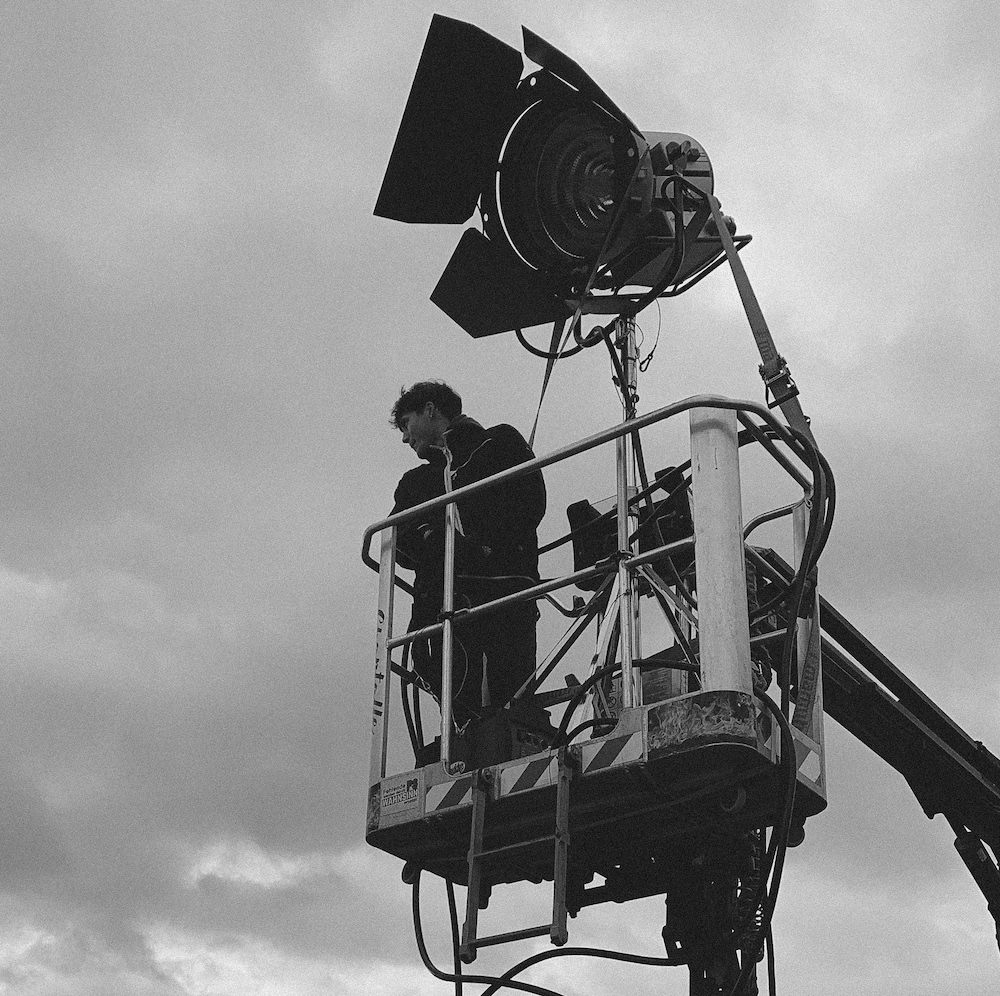
What keeps you motivated and creatively inspired?
I find inspiration in the everyday world around me. Observing the play of light, the vibrant colors, and the architecture of the urban landscape sparks my creativity. Taking photo walks with my little Fuji camera allows me to capture the beauty of life in its simplest moments. I enjoy capturing the essence of life in corners and candid moments, where the true beauty often lies. I’m also influenced by others’ creativity, whether it’s in film, music, or art. My philosophy of “spending more time being alive” drives me to seek experiences and connections that feed my creativity. I believe in finding beauty in the ordinary, without the need to demand attention. As the quote goes, “Beautiful things don’t ask for attention.” Essentially, I walk through life with open eyes, appreciating the mundane as much as the extraordinary, just being present, which I believe is essential in a fast-paced world. What keeps me motivated? I aspire to become one of the best, constantly pushing myself to improve and refine my craft.
What makes a story visually appealing? What role does music play in storytelling?
A visually appealing story is all about getting the different elements to work together smoothly. It’s about finding that balance where everything fits together seamlessly. It’s about how production design, lighting, lensing, blocking, composition, but also color grading collaborate to create a captivating narrative, and it takes them all. (Which of course can be exaggerated at some point, too. If the story asks for it) When these components harmonize, they evoke emotions, drawing the audience deeper into the story. Music plays a crucial role in storytelling by adding another layer of emotion and depth. It’s like the heartbeat of the narrative, amplifying feelings and emphasizing key moments. However, it’s essential for the music to complement the visuals rather than overpower them. When done right, music enhances the viewer’s emotional connection without overshadowing the storytelling.
What elements do you think are essential for crafting a compelling story?
When I think about why certain films resonate with me, it’s because I either relate to the story personally or because the film immerses me so deeply into the characters’ minds that I develop a strong empathy for them and their situations. For me, compelling stories successfully achieve this level of engagement. Similar to my previous answer, it’s crucial how we utilize the individual elements to include the audience and make them feel. And this can only be achieved when all elements come together in a cohesive harmony. I strive to work on this aspect continually, aiming to improve with each project by focusing on my intentions and decisions, not just because something looks better.
How important is music in your work?
Maybe not so much when I’m traditionally on set as a gaffer or DP, or when I’m color grading (even though I often listen to music during color grading). However, even then, I like to put myself in the mood by listening to music that matches the project I’m about to shoot. For my own/personal projects, which I haven’t done much of lately but hope to do more of, music plays an even bigger role because I get to decide which music I want to use to impact the story or evoke emotions in the audience. It allows me to curate an experience that aligns perfectly with my vision for the film. Additionally, music serves as a way to prepare my body and mind for the project, ensuring I’m in the right headspace before shooting.
What advice would you give other filmmakers/ creators who are just starting their careers?
Practice consistently, regardless of the equipment or budget available—simply keep creating. Whether it’s with basic gear or limited resources, the key is to remain dedicated to your craft. Additionally, mastering the ability to work efficiently with limited resources can enhance your value in the industry. By finding innovative solutions that yield comparable results while reducing costs, you position yourself as a valuable asset. Don’t hesitate to involve friends or family in your projects; sometimes, the most meaningful collaborations come from those closest to you. If you’re aspiring to build a career in filmmaking, seek opportunities to get involved on sets early on, network with industry peers, and soak up knowledge from experienced professionals. Be known for your approachability and work ethic—the kind of collaborator others naturally want to work with.
How do you balance pushing boundaries creatively and delivering what your client wants or audience wants to see?
I’d say there’s always a compromise, especially when there are many people involved: clients, art directors, set designers, etc., as well as considerations like budget and brand values. I’m constantly striving to push my creative limits, exploring new approaches, gear, and techniques, and even working with different crews who bring unique ideas. Sometimes, I wonder how my ideas will be received by others or if they align with the client’s vision. Interestingly, these ideas often turn out to be the favorite shots.
What is the most challenging aspect of being a filmmaker/creative?
One of the most daunting challenges I face as a filmmaker is the contrast between the boundless creativity of initial ideas and the constraints imposed by reality. Whether it’s navigating limitations in budget, time, or location, the process often involves compromising on certain aspects of the original vision. It can be disheartening when shots have to be cut or changed due to logistical constraints, as they may deviate from the carefully crafted plan. But that’s why I like to allow space for improvisation which in this case also lets you and your crew mates come up with creative solutions based on what’s available. It’s problem-solving the entire time. The project is pretty stripped down when you consider how cool it could have been. Of course, it’s sad, but you come to terms with it and at the end of the day you have more drive for further projects and new ideas and things to optimize. Sometimes you’re even finding yourself implementing some of these ideas into a new project. I think that’s just the journey. Despite these challenges, there’s constant pressure to keep the creative juices flowing, especially when inspiration seems to be in short supply. Taking breaks to recharge and refresh becomes crucial in maintaining a sustainable approach to creativity amidst the demands of the industry. It’s about balancing pushing boundaries and acknowledging the need for downtime, ensuring that creativity remains a rewarding and fulfilling pursuit.
What are some of your favorite projects you’ve worked on?
My favorite projects tend to vary, but they often revolve around passion projects rather than paid ones. I find myself drawn to projects with small, intimate crews where we all become or are friends. One standout project for me is “Ese Sueño,” a short film directed by my friend Ignacio. I think it’s because I can empathize with the story of the short film so well. And the dialogue is also so beautifully simple, real, and intimate. And of course, it’s Spanish. After a period of not creating much for myself and my creative soul—which I believe is crucial—I felt incredibly fulfilled working on this project. We flew to Galicia, where Ignacio is based, with a full camera package, rented lenses, and a small lighting kit. Despite our limited resources, we made it work, and the creativity flowed. The locations and people we worked with were incredibly inspiring and talented. It was a deeply fulfilling experience. Also, it’s funny because all of my favorite projects haven’t been released yet. So even though Ese Sueño hasn’t been released yet, I can share some BTS and stills with you. I will probably also upload an insightful video about it to my YouTube channel soon.
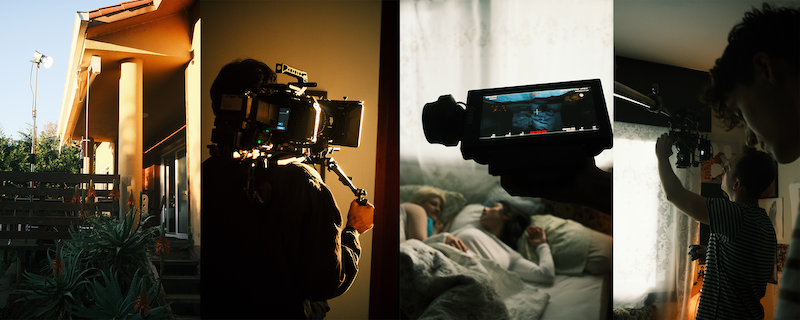
How do you search for music on Musicbed? What are some tips that you’d give other filmmakers to search on Musicbed?
Typically, I start by filtering by genre and attributes, possibly focusing on specific instruments. Once I’ve found some promising tracks, I explore the artist’s catalog to see if there’s more music that resonates with me, even if it’s not intended for my current project—I often save these discoveries for future use. Alternatively, I look for similar songs to broaden my options. If I’m struggling to categorize the music in my head, I turn to playlists for inspiration. The new AI Search By Song tool is particularly helpful; I can input a song or score that fits the desired mood and discover similar tracks. Additionally, I appreciate Musicbed’s advanced search options, such as filtering by BPM, song length, or key. These features are especially useful for short commercials or when needing to match rhythms or keys for seamless transitions between songs.
Why do you utilize Musicbed in your work?
Because it offers the best selection of music that resonates with me. I aim to incorporate music into my films that I genuinely enjoy listening to or would personally listen to. In my experience, other platforms often fall short, providing music that sounds generic or like stock music. For me, authenticity and originality are paramount, and Musicbed consistently delivers in these aspects, providing the right sound that resonates with the authenticity I seek in my projects. Real music by real artists for real films.
—
Explore a curated playlist of Jared’s favorite songs to use in his work—all available to license only on Musicbed.


